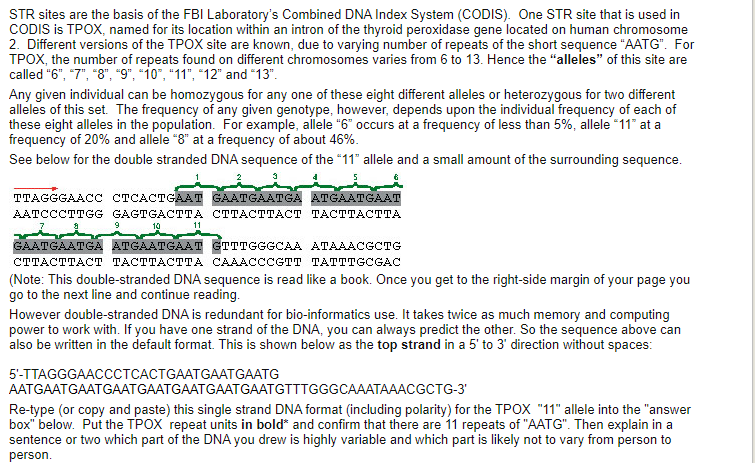5'-TTAGGGAACCCTCACTGAATGAATGAATG AATGAATGAATGAATGAATGAATGAATGAATGTTTGGGCAAATAAACGCTG-3' Re-type (or copy and paste) this single strand DNA format (including polarity) for the TPOX "11" allele into the "answer box" below. Put the TPOX repeat units in bold* and confirm that there are 11 repeats of "AATG". Then explain in a sentence or two which part of the DNA you drew is highly variable and which part is likely not to vary from person to person.
Genetic Recombination
Recombination is crucial to this process because it allows genes to be reassorted into diverse combinations. Genetic recombination is the process of combining genetic components from two different origins into a single unit. In prokaryotes, genetic recombination takes place by the unilateral transfer of deoxyribonucleic acid. It includes transduction, transformation, and conjugation. The genetic exchange occurring between homologous deoxyribonucleic acid sequences (DNA) from two different sources is termed general recombination. For this to happen, an identical sequence of the two recombining molecules is required. The process of genetic exchange which occurs in eukaryotes during sexual reproduction such as meiosis is an example of this type of genetic recombination.
Microbial Genetics
Genes are the functional units of heredity. They transfer characteristic information from parents to the offspring.

Trending now
This is a popular solution!
Step by step
Solved in 2 steps with 1 images


